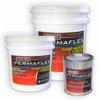Products Needed:
Property owners have many options when it comes to building a house. Concrete Blocks are also known as Cinder Blocks and CMU’s (concrete masonry units) and can be used to quickly create a sturdy structure that can be built into a home.
Concrete blocks can be called many things, but they all consist of three basic ingredients: water, portland cement, and aggregate (sand or rock). Sometimes, aggregate replacements such as fly ash are used.
Concrete Masonry Units are also known as CMUs. Concrete Masonry Unit refers to a unit of building blocks that is larger than 12 inches  by 4 inches by 4 inches. It is made from cement and the appropriate aggregates.
by 4 inches by 4 inches. It is made from cement and the appropriate aggregates.
Cinder Blocks are an archaic term for concrete blocks that contain ash or cinders. These cinders are often a byproduct of the coal and steel industries. They can be used to replace block aggregates in block production.
Concrete blocks are strong enough to be used for load-bearing building foundation walls and basement walls. Concrete blocks can be used to create partition walls, exterior walls, and retaining walls. In addition, concrete blocks can be used to build stronger structural walls.
Concrete block homes are more healthy than wooden structures, as they emit fewer volatile organic compounds (VOCs). Concrete block structures can also have exceptional sound insulation and thermal insulation. Concrete blocks are also great for areas that are prone to extreme weather.
Five Concrete Block Homes: Advantages
1. Concrete block homes are a low-maintenance option for high-moisture regions.
Concrete blocks are not as susceptible to mold and mildew as wood construction. This reduces the chance of structural damage and health issues.
Concrete block homes are resistant to pests that can cause damage to structures exposed to moisture. The construction material makes it less likely that termites and rodents can get into the walls.
2. Concrete is fire resistant.
Concrete is non-flammable. Concrete blocks are popular building materials for areas with frequent wildfires. Concrete blocks are a great way to protect real estate investments, even if they’re located in high-risk areas. Concrete block has an ASTM E119 fire rating that lasts four hours if it is used in accordance with best practices. This is double the code requirement for many areas.
3. Concrete block homes are strongly resistant to extreme winds.
Concrete blocks can be used for building homes in areas with strong winds. Concrete blocks are naturally resistant to high winds such as hurricanes and tropical storms. Concrete blocks can withstand winds of up to 200 miles per hour. If it is maintained well, the structure can last for many centuries.
You can add reinforcement products like rebar or any other material to increase the strength of concrete blocks. Insulation can also be added to pre-molded blocks to speed up interior construction.
4. This material could help homeowners cut down on their energy consumption.
Concrete block homes are ideal for people who wish to lower their energy consumption. Concrete block homes offer great value and are eco-friendly. Concrete block is a more cost-effective building material than many other materials. It has a high R-value and can be used to reduce heating and cooling costs up to 20% in certain areas, especially if there is additional insulation within the walls.
5. Concrete block homes are almost soundproof.
Concrete block homes offer built-in soundproofing, making them ideal for urban properties or those located near industrial or aviation zones. This material can reduce noise from nearby commercial aircraft or planes flying overhead. This material can block around 75% of outside noise. These results can be improved by double-pane windows.
Five Concrete Block Home Disadvantages
1. Concrete blocks are less expensive than bricks.
Concrete prices can fluctuate, and there may be regional variations. Concrete is more expensive than traditional wood framing and traditional options. This could make it more difficult for homeowners to afford the design. This isn’t the right choice for everyone. However, it will eventually pay off your initial investment because of the lower energy costs. Concrete blocks may cost three times as much as wood framing and drywall in some areas.
2. Concrete block homes can lack curb appeal
Concrete blocks can look dull and boring in a home. You can improve the appearance of your property by adding a layer of stucco or cement. This will increase the cost. Vinyl siding can be added to give your home more curb appeal.
3. This material may not be suitable for specific regional preferences.
Concrete block homes might not be the best choice for all communities. Unfortunately, this could mean that the product may not be accepted in all areas. Pre-molded, this building material won’t allow you to create many unique designs. It may also not be possible to use by some contractors.
4. Some blocks may need to be removed to reach the utilities or make any changes.
If a problem develops with wiring or plumbing, a professional might be required to fix it. You might consider having your utilities run through specific access points to reduce any potential disadvantages.
5. Concrete blocks can be prone to water seepage.
Concrete blocks can cause seepage damage in areas with high water tables. Concrete blocks are strong but porous and allow water to penetrate. Water is persistent and will seek the path of least resistance. It can eventually make its way through walls and cause damage.
Water seepage can eventually lead to efflorescence. This is a grayish or white coating that results from the movement of salts through the porous block. Water seepage can also cause mold and mildew growth, which are major health problems in the home.
The SANI-TRED waterproofing system can be combined with this fantastic building material to eliminate some of these disadvantages. SANI-TRED can be used on exterior or interior block walls to stop water seepage permanently and eliminate mold, mildew, efflorescence, and structural deterioration.




